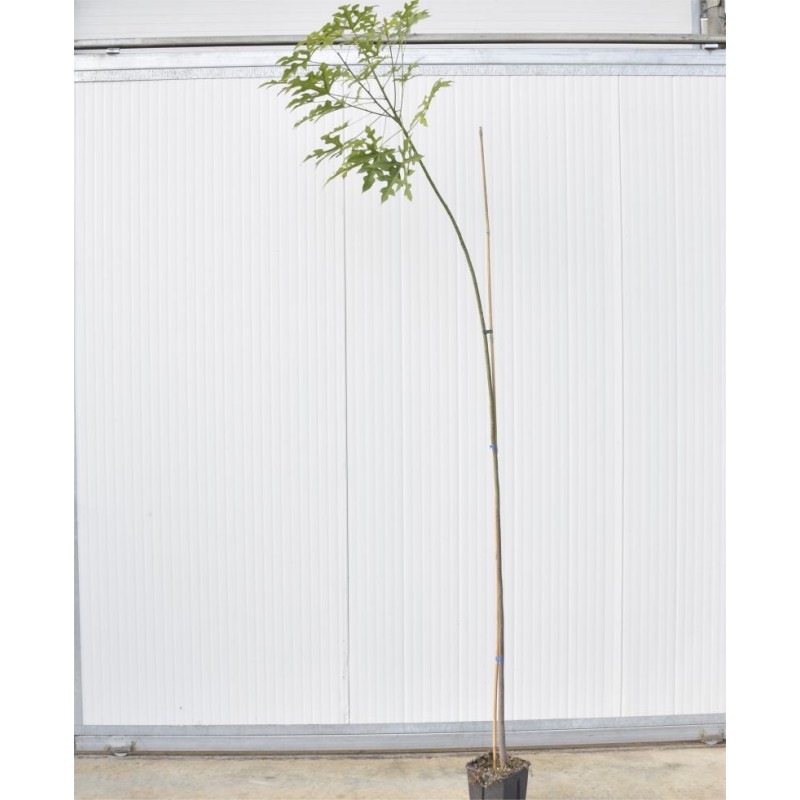Brachychiton plant
Generalities:
Brachychiton Acerifolius is a large tree with an upright habit, which widens with age, with semi-persistent foliage, with large glossy green leaves above, from 10 to 20 cm., With 3 or 5 lobes. Sometimes we also find simple leaves, all on the same tree. It reaches a height ranging from 8 to 12 m., While the diameter from 5 to 7 m. and more in its country of origin: Australia. In July, before the new leaves, a magnificent vermilion red bloom emerges, with small 2 cm flowers. about, gathered in large falling panicles.
- jar 15Ccm; h. 160/180cm
- jar 7cm, h.15-25cm
Generalities:
The Brachychiton is a genus that includes 20-30 species of shrubs or trees native to Australia, which in optimal conditions can reach 20-30 meters in height, even if they usually keep within smaller dimensions between 10 and 15 m. They have a sinuous trunk, which tends to widen at the base, with wide and disordered foliage, usually pyramidal in shape. The leaves are large, bright green, glossy, with whole margins or deeply lobed. Brachychiton Populneus produces greenish flowers, gathered in panicles. Brachychiton acerifolius, or bottle tree, is highly prized for its showy red-purple spring flowering. Brachychiton rupestris is the most hardy and hardy, slow-growing species. The flowers are replaced by fruits: large semi-woody capsules, inside which there are large seeds. Some species are small in size and fear the cold and are grown as houseplant.
Cultivation and Care:
Brachychiton acerifolius, better known as the bottle or flame tree, prefers very sunny locations. The adult specimens of this genus of trees do not fear the cold, but the young plants must be sheltered in winter, to prevent the frost from ruining them. If they are placed in the ground, it is possible to intervene with some agritessuto to cover the foliar apparatus and mulch material or dry leaves, to repair the root system from the consequences of the harsh climate.
The Brachychiton acerifolius, or flame or bottle tree, does not need large quantities of water, for this reason it is advisable to water sporadically providing large quantities of water, to favor a correct development of the roots.
When planting and then every autumn, bury the well-mature fertilizer at the foot of the plant, then water abundantly, so as to provide all the nourishment necessary for a better development. Check that there are no stagnations of water at the base of the plant that could cause the onset of root rot. Brachychiton acerifolius plants love rich, loose, very well drained soil, possibly with an acid pH.



















